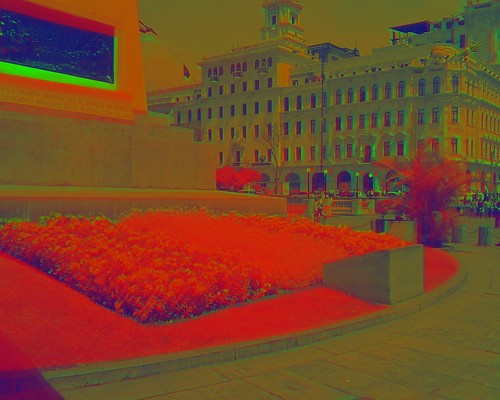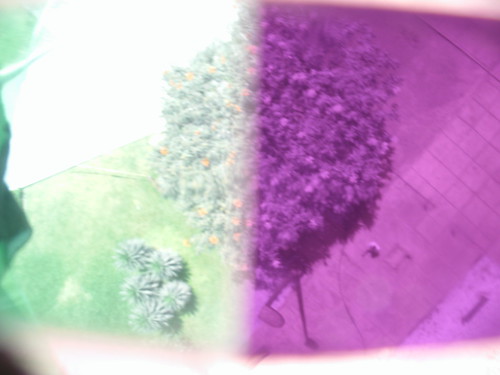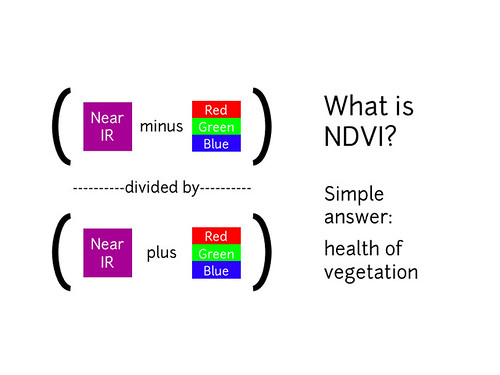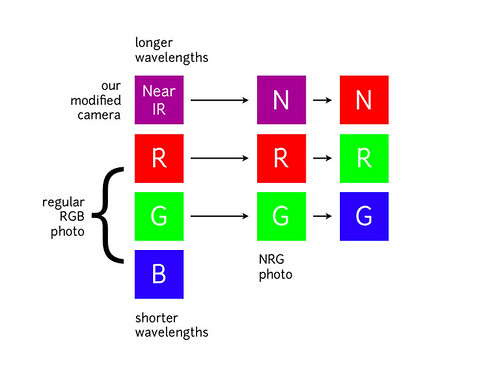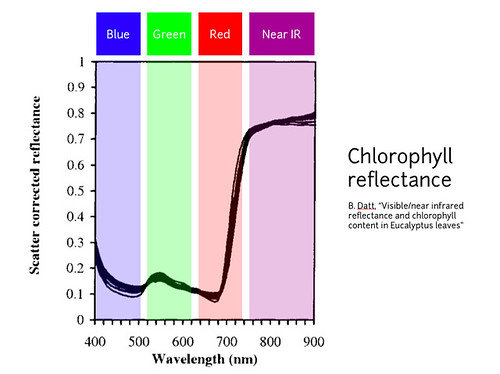
Near-Infrared Camera
We've been modifying cheap cameras to take infrared photos. This can be used to generate NDVI or NRG images, which is helpful in assessing vegetative health or stress. (Read more here: https://www.agronomy.org/publications/jeq/articles/36/3/832)
Learn to remove the infrared filter from your camera: https://www.flickr.com/photos/lpimaging/sets/72157625698391563/with/5355456142/
NDVI example:
NRG example:
By putting both an infrared-pass filter and an infrared-block filter on the same camera, you can get both infrared and visible light with one photograph... though the areas don't overlap. This means you can get such imagery from the air using balloon mapping, while only risking one camera. Another alternative is to use the in-development stereo camera being developed by the New York City chapter
What is NDVI? What is NRG?
What are these images we're trying to make? What do they tell us about vegetation, and why? These diagrams should help to understand what it is we're doing and why these are good ways to analyze plant life.

